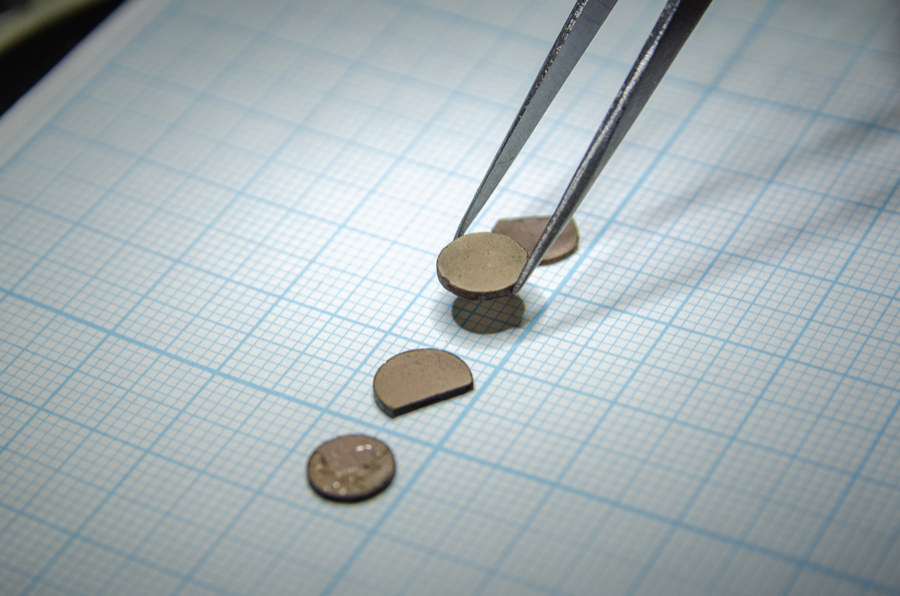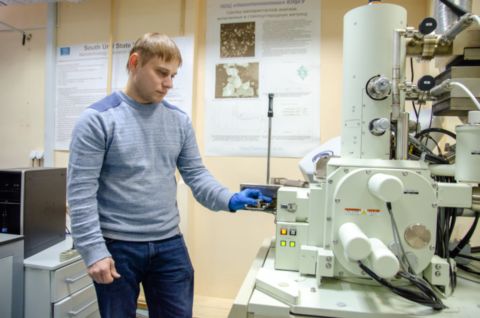The study of a high-entropy material with a perovskite structure was carried out by scientists from the South Ural State University (SUSU). They obtained a new material with a high configurational entropy of mixing and evaluated the effect of changing its chemical composition on physical properties. The study was published in the highly-rated journal Ceramics International (Q1).
High-entropy materials with the perovskite structure are created at the South Ural State University based on the Crystal Growth Laboratory, headed by Vladimir Zhivulin, Candidate of Physical and Mathematical Sciences. High-entropy materials, called materials of the future, consist of five or more components of the same concentration. SUSU scientists replace one of the sublattice cations in the perovskite structure with five or more components. The final material acquires unique physical properties. Such materials with the perovskite mineral structure are promising for use in electronics. In one of the latest studies, SUSU scientists turned to LnCr0.2Mn0.2Fe0.2Co0.2Ni0.2O3 perovskite and determined lanthanum, samarium, europium, and gadolinium. These rare-earth ions affect its structure and electrical properties. The material created by scientists is new and not previously studied.
“The innovation of this research lies in the fact that in various ways we obtain completely new materials that no one has ever received before us, let alone investigated. In parallel with this, we gain tremendous experience in obtaining complex systems. Having the experience and understanding of how each element of a complex multicomponent system affects the properties of the connection as a whole, we will be able to create a material with predetermined and necessary properties. I believe that this is the next step in the materials science development,” said Vladimir Zhivulin.

Perovskite was obtained by solid-phase synthesis, one of three methods used in the Crystal Growth Laboratory. Having studied the elemental and crystal structure of the new material, the scientists turned to its physical properties. By measuring the electrical conductivity, they found that this property depends on the elemental composition, and changing the number and composition of substituting elements it is possible to control its electrical conductivity. In further studies, scientists plan to establish the charge transfer mechanism and its relationship with the entropic state. Note that by changing the chemical composition of a substance, scientists can adjust other properties of materials. Such studies are carried out at the Crystal Growth Laboratory. In addition, all materials that are created in the SUSU laboratory have high-temperature stability and a magnetic phase transition point below zero degrees Celsius. It is a rare and sought-after combination. The resulting materials, scientists believe, are suitable for creating electronic devices. There are plans to create self-calibrating temperature sensors based on them. The scientists do not focus only on the topic of high-entropy perovskites. Work on a high-entropy material with the magnetoplumbite structure is underway. The scientists also plan to create high-entropy alloys. The Russian Science Foundation Crystal Growth supported the Laboratory with grants.
The results obtained within the framework of these studies will be used to implement the goals and objectives set in the SUSU strategic project New Advanced Materials under the Priority 2030 program. South Ural State University is a university of digital transformations, where innovative research is carried out in most priority areas for science and technology development. Following the strategy of scientific and technological development of the Russian Federation, the university focuses on the development of large scientific interdisciplinary projects in the field of the digital industry, materials science, and ecology. In 2021, SUSU won the competition under the Priority 2030 program. The university performs the functions of the regional project office of the Ural Interregional Research and Educational Center of the world level.




